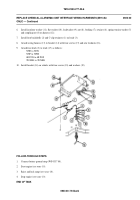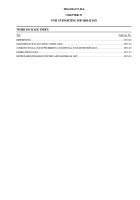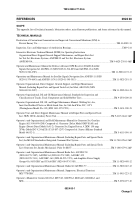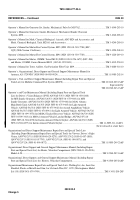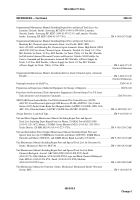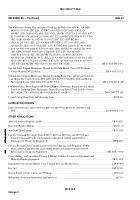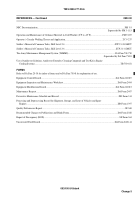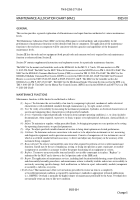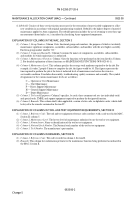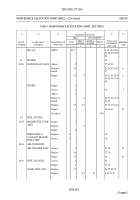TM-9-2350-277-20-6 - Page 484 of 487
TM 9-2350-277-20-6
MAINTENANCE ALLOCATION CHART (MAC)
0925 00
0925 00-1
Change 5
GENERAL
This section provides a general explanation of all maintenance and repair functions authorized at various maintenance
levels.
The Maintenance Allocation Chart (MAC) in Section II designates overall authority and responsibility for the
performance of maintenance functions on the identified end item or component. The application of the maintenance
functions to the end item or component will be consistent with the capacities and capabilities of the designated
maintenance levels.
Section III lists the tools and test equipment (both special tools and common tool sets) required for each maintenance
function as referenced from Section II.
Section IV contains supplemental instructions and explanatory notes for a particular maintenance function.
The MAC for the mounts and turntables used on the M1064A3 for the M121, 4.7 inch, 120-mm mortar is in TM
9-1015-250-23&P. The MAC for the M157 Pulse Jet Generator set used in M1059A3 is in TM 3-1040-283-20&P. The
MAC for the M1068A3 Common Hardware System (CHS) is covered in TM 11-7010-256-12&P. The MAC for the
M1068A3 Modular Command Post System (MCPS) is covered in TM 10-8340-243-13&P. The MAC for Personnel
Heaters is covered in TM 9-2540-205-24&P or TM 9-2540-207-14&P.
The MAC for the turntable used in the
M1064A3 is in TM 9-1015-232-23&P.
The MAC for the Mechanical Smoke Obscurant System used in the M58 is in
TM 3-1040-285-20. The MAC for the Mortar Fire Control System (MFCS) used in the M1064A3 and M577A3 is in TM
9-1220-248-23&P.
MAINTENANCE FUNCTIONS
Maintenance functions will be limited to and defined as follows:
(1)
Inspect
. To determine the serviceability of an item by comparing its physical, mechanical, and/or electrical
characteristics with established standards through examination (e.g., by sight, sound, or feel).
(2)
Test
. To verify serviceability by measuring the mechanical, pneumatic, hydraulic, or electrical characteristics of
an item and comparing those characteristics with prescribed standards.
(3)
Service
. Operations required periodically to keep an item in proper operating condition; i.e., to clean (includes
decontaminate, when required), to preserve, to drain, to paint, or to replenish fuel, lubricants, chemical fluids, or
gasses.
(4)
Adjust
. To maintain or regulate, within prescribed limits, by bringing into proper or exact position or by setting
the operating characteristics to specified parameters.
(5)
Align
. To adjust specified variable elements of an item to bring about optimum or desired performance.
(6)
Calibrate
. To determine and cause corrections to be made or to be adjusted on instruments or test, measuring,
and diagnostic equipment used in precision measurement. Consists of comparisons of two instruments, one of
which is a certified standard of known accuracy, to detect and adjust any discrepancy in the accuracy of the
instrument being compared.
(7)
Remove/Install
. To remove and install the same item when required to perform service or other maintenance
functions. Install may be the act of emplacing, seating, or fixing into position a spare, repair part, or module
(component or assembly) in a manner to allow the proper functioning of an equipment or system.
(8)
Replace
. To remove an unserviceable item and install a serviceable counterpart in its place. “Replace” is
authorized by the MAC and is shown as the 3rd position code of the SMR code.
(9)
Repair
. The application of maintenance services, including fault location/troubleshooting, removal/installation,
and disassembly/assembly procedures, and maintenance actions to identify troubles and restore serviceability to
an item by correcting specific damage, fault, malfunction, or failure in a part, subassembly, module (component
or assembly), end item, or system.
(10)
Overhaul
. That maintenance effort (service/action) prescribed to restore an item to a completely
serviceable/operational condition as required by maintenance standards in appropriate technical publications
(i.e., DMWR). Overhaul is normally the highest degree of maintenance performed by the Army. Overhaul does
not normally return an item to like-new condition.
Back to Top

